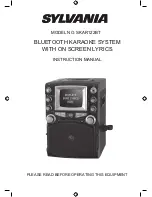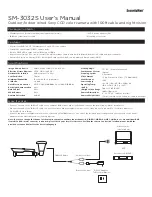
PowerSeries Neo Installation Guide
Additional Wiring
Zone Wiring
Power down the alarm controller and complete all zone wiring.
Zones can be wired to supervise normally open devices (e.g., smoke detectors) or
normally closed devices (e.g., door contacts). The alarm panel can also be
programmed for single end-of-line or double end-of-line resistors.
Zone programming is done using the following programming sections:
l
[001] selects zone definition
l
[013] Opt [1] for normally closed or EOL; Opt [2] for SEOL or DEOL
l
[201 - 208] partition assignment.
Observe the following guidelines when wiring zones:
l
For UL listed installations use SEOL or DEOL only
l
Minimum 22 AWG wire, maximum 18 AWG
l
Do not use shielded wire
l
Do not exceed 100
Ω
wire resistance. Refer to the following table:
Table 1-4 Burglary Zone Wiring Chart
Wire Gauge
Maximum Length to EOL Resistor (ft/-
meters)
22
3000 / 914
20
4900 / 1493
19
6200 / 1889
18
7800 / 2377
Figures are based on maximum wiring resistance of 100
Ω.
Aux Power Wiring
These terminals provide 11.3-12.5VDC/700mA of current (shared with PGM
outputs). Connect the positive side of any device to the AUX+ terminal, the
negative side to GND. The AUX output is protected; if too much current is
drawn from these terminals (wiring short) the output is temporarily shut off until
the problem is corrected.
Note:
If using a 12V, 14Ah battery, maximum AUX capacity for 24-hour
standby is 470mA.
PGM Wiring
Min/max operating voltages for devices, sensors and modules is 9.5VDC -
14VDC.
PGMs switch to ground when activated from the alarm controller. Connect the
positive side of the device to the AUX+ terminal and the negative side to a PGM
terminal.
PGM 1, 3, 4 supply up to 50mA; PGM 2 supplies up to 300mA.
A relay is required for current levels greater than 50mA or 300mA. PGM2 can
also be used for 2-wire smoke detectors, 24-hr burglary input alarm.
Note:
Use SEOL resistors on Fire zones only.
Figure 1-2 LED Output with Current Limiting Resistor and
Optional Relay Driver Output.
Single End-of-Line (SEOL) Resistor
When SEOL resistors are installed at the end of a zone loop, the alarm panel
detects if the circuit is secure, open, or shorted. The SEOL resistor must be
installed at the end of the loop for proper supervision.
To enable SEOL supervision, program section [013], options [1] and [2] to OFF.
Note:
This option should be selected if either normally closed or normally open
detection devices or contacts are used.
Figure 1-3 SEOL Wiring
Double End of Line (DEOL) Resistors
When double end-of-line (DEOL) resistors are installed at the end of a zone
loop, the second resistor enables the panel to determine if the zone is in open,
closed, tampered or faulted.
Note:
Any zone programmed for Fire or 24-hr Supervisory must be wired with a
SEOL resistor regardless of the type of zone wiring supervision selected for the
panel. If you change the zone supervision options from DEOL to SEOL or from
NC to DEOL, power the system down completely, then power it back up for
correct operation.To enable DEOL supervision, program section [013], option [1]
to OFF and option [2] to ON.
Figure 1-4 DEOL Wiring
Bell Wiring
These terminals supply 700mA of current at 10.4 - 12.5VDC for commercial/
residential installations. To comply with NFPA 72 Temporal Three Pattern
requirements, section [013] Opt [8] must be ON. Note that steady, pulsed alarms
are also supported.
Figure 1-5 Bell Wiring
The Bell output is supervised and power limited by 2A thermistor. If unused,
connect a 1000
Ω
resistor across Bell+ and Bell- to prevent the panel from
displaying a trouble.
Telephone Line Wiring
Wire the telephone connection terminals (TIP, Ring, T-1, R-1) to an RJ-31x
connector as indicated in the following diagram. For connection of multiple
devices to the telephone line, wire in the sequence indicated. Use 26 AWG wire
minimum for wiring.
- 4 -





































